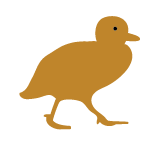ASIA2074 will focus on Popular Culture in Korea and Japan. A Popular Culture in China course will be offered in Winter through ASIA2112.
This course introduces students to aspects of the fascinating realm of popular culture in East Asia. Students learn about major theoretical paradigms in cultural studies, and how they may apply to developments in East Asian popular culture in the past and present. Emphasis is placed on what drives the consumption of popular culture, and whether that consumption can be argued to represent resistance. Case studies are drawn from, among others, advertising, cinema, toys, comics, gadgets, fashion, pop music, sports, and social media in mainland China, Taiwan, Japan, and North and South Korea, with a slight emphasis on the latter.
Learning Outcomes
Upon successful completion, students will have the knowledge and skills to:
- Understand the socio-cultural conditions that have nurtured pop culture in East Asia;
- Apply popular theoretical concepts in cultural studies;
- Demonstrate an understanding of what nurtures consumption and fandom;
- Develop coherent analytical arguments both orally and in writing;
- Discuss key features of East Asian popular culture.
Other Information
Course will run over 12 weeks and be taught as a single block of 3 hours (with a break in the middle). The block comprises 12 x 2-hour lectures, and 12 x 1-hour tutorials.
All course materials and instructions will be provided through the course's Canvas site shortly before the start of the course. Students should familiarise themselves with the course plan and read the two articles listed for week 1 ahead of the first lecture. As indicated under the Code of Practice for Teaching and Learning, attendance at all scheduled teaching activities is required, unless a valid reason for non-attendance is provided. NB: at least several of the exam questions will be based on discussions had during tutorials (which are not recorded).
Indicative Assessment
- Participation (10) [LO 1,2,3,4,5]
- Selfeature (10) [LO 3,4]
- Mid-term exam (15) [LO 1,3,5]
- Critical reviews (2, of 1,250 words each) (35) [LO 1,2,3,4,5]
- Final exam (30) [LO 1,3,5]
The ANU uses Turnitin to enhance student citation and referencing techniques, and to assess assignment submissions as a component of the University's approach to managing Academic Integrity. While the use of Turnitin is not mandatory, the ANU highly recommends Turnitin is used by both teaching staff and students. For additional information regarding Turnitin please visit the ANU Online website.
Workload
The total workload for the course is 130 hours including in-class time and independent study. This course will be delivered in person in the form of weekly in-person lectures and tutorials.
Requisite and Incompatibility
Prescribed Texts
N/A
Assumed Knowledge
Basic tertiary-level training in the humanities is essential.Majors
Minors
Fees
Tuition fees are for the academic year indicated at the top of the page.
Commonwealth Support (CSP) Students
If you have been offered a Commonwealth supported place, your fees are set by the Australian Government for each course. At ANU 1 EFTSL is 48 units (normally 8 x 6-unit courses). More information about your student contribution amount for each course at Fees.
- Student Contribution Band:
- 14
- Unit value:
- 6 units
If you are a domestic graduate coursework student with a Domestic Tuition Fee (DTF) place or international student you will be required to pay course tuition fees (see below). Course tuition fees are indexed annually. Further information for domestic and international students about tuition and other fees can be found at Fees.
Where there is a unit range displayed for this course, not all unit options below may be available.
| Units | EFTSL |
|---|---|
| 6.00 | 0.12500 |
Course fees
- Domestic fee paying students
| Year | Fee |
|---|---|
| 2026 | $4500 |
- International fee paying students
| Year | Fee |
|---|---|
| 2026 | $5820 |
Offerings, Dates and Class Summary Links
ANU utilises MyTimetable to enable students to view the timetable for their enrolled courses, browse, then self-allocate to small teaching activities / tutorials so they can better plan their time. Find out more on the Timetable webpage.
Class summaries, if available, can be accessed by clicking on the View link for the relevant class number.
First Semester
| Class number | Class start date | Last day to enrol | Census date | Class end date | Mode Of Delivery | Class Summary |
|---|---|---|---|---|---|---|
| 3589 | 23 Feb 2026 | 02 Mar 2026 | 31 Mar 2026 | 29 May 2026 | In Person | N/A |


